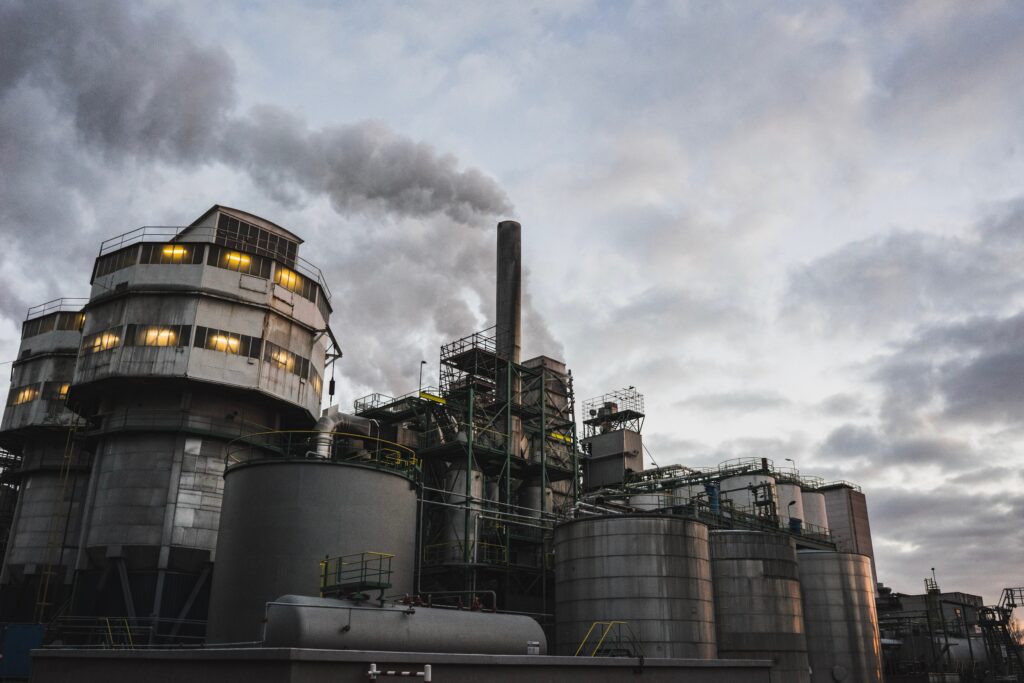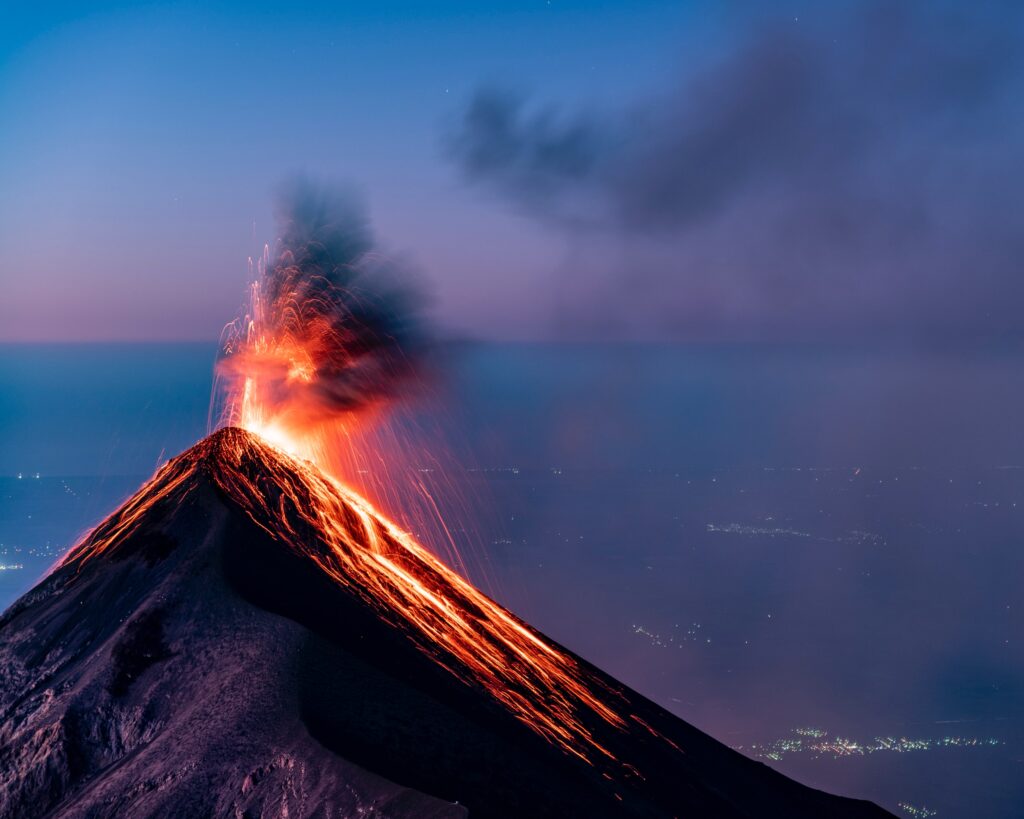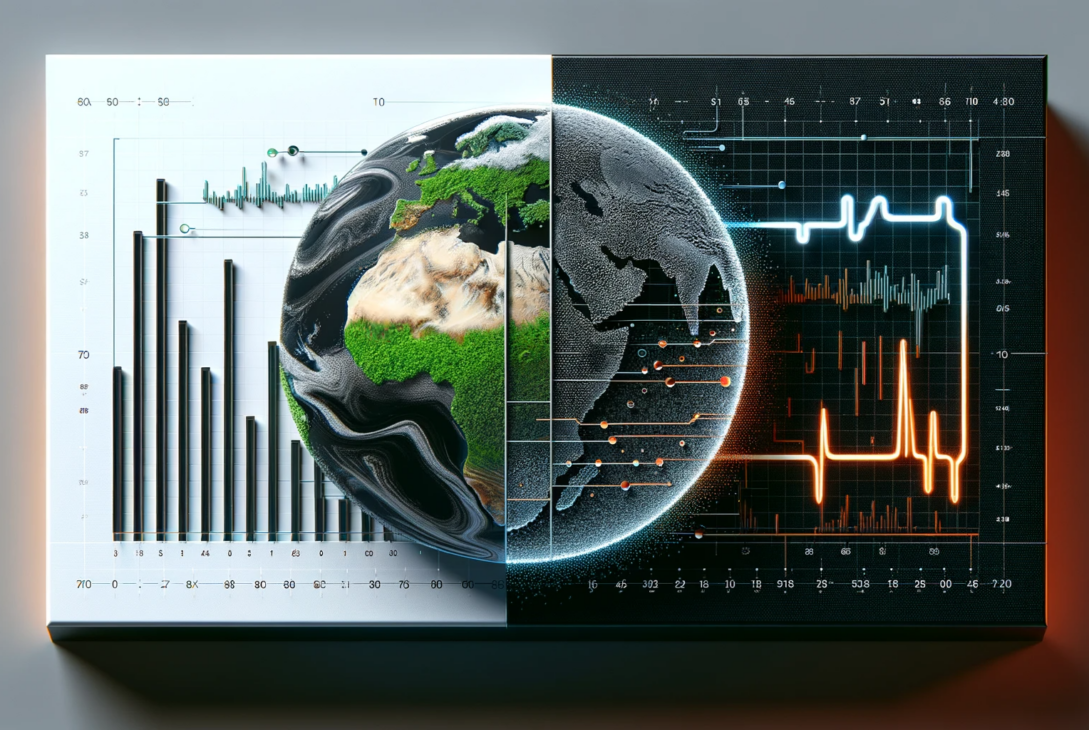The question of whether climate change is a natural process or a man-made issue has been a topic of heated debate for decades. As the world grapples with the consequences of a changing climate, it’s crucial to understand the various perspectives on this matter. In this article, we will delve into the complexities of the climate change debate, presenting a balanced argument supported by a range of statistics and scientific evidence. By examining both natural and anthropogenic factors, we aim to shed light on the multifaceted nature of climate change.
Natural Climate Variability:
To begin our exploration, it is essential to acknowledge that the Earth’s climate has always been subject to natural variability. Geological records spanning millions of years reveal a history of climate fluctuations, including ice ages, warm periods, and everything in between. These natural climate variations are primarily driven by factors such as volcanic eruptions, changes in solar radiation, and Earth’s orbital variations.
Volcanic eruptions, for instance, release vast quantities of gases and aerosols into the atmosphere, including sulfur dioxide (SO2). These volcanic emissions can lead to short-term cooling by reflecting sunlight back into space, as observed in the aftermath of the 1991 Mount Pinatubo eruption. Similarly, changes in the Earth’s orbit and axial tilt, known as Milankovitch cycles, influence the planet’s long-term climate patterns, contributing to the onset and termination of ice ages over geological time scales.
It is undeniable that natural processes play a substantial role in shaping the Earth’s climate. However, the crucial question in the current debate is whether human activities have significantly accelerated and amplified these natural climate fluctuations.
Anthropogenic Influence:
The Industrial Revolution, which began in the late 18th century, marked a turning point in human history. With the widespread adoption of fossil fuels and the rapid expansion of industrial activities, the release of greenhouse gases, such as carbon dioxide (CO2), methane (CH4), and nitrous oxide (N2O), into the atmosphere increased dramatically. These gases trap heat, creating what is commonly referred to as the greenhouse effect.

Since the Industrial Revolution, the concentration of CO2 in the atmosphere has risen from approximately 280 parts per million (ppm) to over 400 ppm as of recent measurements. This increase is primarily attributed to the burning of fossil fuels, deforestation, and various industrial processes. Methane emissions, largely stemming from agriculture and livestock, as well as natural sources like wetlands, have also surged.
The Role of Greenhouse Gases:
Greenhouse gases are at the heart of the climate change debate. Proponents of the man-made climate change argument argue that the rapid increase in these gases due to human activities has led to a discernible warming of the planet. According to the Intergovernmental Panel on Climate Change (IPCC), the global average surface temperature has risen by approximately 1.2 degrees Celsius (2.2 degrees Fahrenheit) since the late 19th century. The majority of this warming has occurred in recent decades.
Statistical evidence from multiple sources supports this claim. Temperature records maintained by the National Oceanic and Atmospheric Administration (NOAA) and NASA’s Goddard Institute for Space Studies (GISS) show a clear upward trend in global temperatures over the last century. Furthermore, the World Meteorological Organization (WMO) reports that the past six years (up to the time of this writing) have been the hottest on record.
Extreme Weather Events:
Another compelling argument for the anthropogenic influence on climate change is the increasing frequency and severity of extreme weather events. Hurricanes, heatwaves, droughts, and wildfires have become more frequent and intense in recent years. While natural variability can contribute to these events, the scientific consensus is that human activities are exacerbating their impacts.
Statistical data compiled by organizations like the National Aeronautics and Space Administration (NASA) and the National Center for Atmospheric Research (NCAR) demonstrate a link between rising global temperatures and the increased occurrence of extreme weather events. For instance, the intensity of hurricanes has been linked to warming ocean waters, and heatwaves are becoming more prolonged and deadly.
Ocean Acidification and Sea-Level Rise:
Beyond temperature changes and extreme weather events, the impact of anthropogenic climate change extends to the world’s oceans. The oceans act as a vital sink for CO2, absorbing approximately 30% of human-generated carbon emissions. While this buffering capacity helps mitigate the greenhouse effect, it has unintended consequences.
As CO2 dissolves in seawater, it forms carbonic acid, leading to ocean acidification. This can harm marine life, especially organisms with calcium carbonate shells or skeletons, such as corals and certain shellfish. Additionally, the thermal expansion of seawater due to warming and the melting of polar ice contribute to sea-level rise.
The statistical evidence for these phenomena is substantial. The United Nations’ Intergovernmental Panel on Climate Change (IPCC) reports that the rate of global sea-level rise has accelerated over the past century, and the oceans are now rising at an average rate of 3.3 millimeters per year.
Natural Climate Drivers:
One of the central arguments in favor of natural climate change is the role of natural drivers, which have influenced the Earth’s climate for millions of years. These natural drivers include volcanic eruptions, solar variability, ocean circulation patterns, and orbital variations, among others.
Volcanic eruptions, as mentioned earlier, can release significant amounts of aerosols and gases into the atmosphere, leading to short-term cooling. Historical records show periods of cooling following major volcanic events, such as the “Year Without a Summer” in 1816, caused by the eruption of Mount Tambora. This historical precedent underscores the natural variability of climate.

Photo by Alain Bonnardeaux on Unsplash.
Solar variability is another natural driver of climate change. The sun’s energy output fluctuates over time, impacting Earth’s temperature. The Little Ice Age, a period of cooler temperatures from the 14th to the mid-19th century, is often associated with a period of reduced solar activity known as the Maunder Minimum.
Ocean circulation patterns, such as El Niño and La Niña, also influence climate variability on regional and global scales. These natural phenomena can lead to periods of warming or cooling, affecting weather patterns and sea surface temperatures.
Historical Climate Cycles:
Proponents of the natural climate change argument often point to historical climate cycles as evidence of ongoing natural variability. For example, the Medieval Warm Period (approximately 950-1250 AD) and the subsequent Little Ice Age (approximately 1350-1850 AD) are often cited as periods of significant climate change.
During the Medieval Warm Period, temperatures in some regions were warmer than today, allowing for agricultural expansion in areas like Greenland. Conversely, the Little Ice Age brought colder temperatures and had notable impacts on societies worldwide.
The Holocene Climate Optimum, occurring around 5,000 to 9,000 years ago, was a period of warmth during which human civilization flourished. These historical climate variations suggest that the current changes may be part of a broader natural cycle.
Natural Carbon Sources:
Another aspect of the natural climate change perspective revolves around natural sources of carbon dioxide. While human activities have undoubtedly contributed to increased CO2 levels in the atmosphere, natural sources also play a significant role. These sources include volcanic emissions, wildfires, and carbon release from soil and vegetation.
Volcanoes, both on land and under the sea, release substantial amounts of CO2 during eruptions. Over geological time scales, this natural process has contributed to variations in atmospheric CO2 concentrations.
Wildfires, often ignited by lightning strikes, release carbon stored in vegetation and soil. These events can release substantial amounts of CO2 and have been occurring for millions of years.
Climate Models and Uncertainty:
Critics of the consensus view on anthropogenic climate change argue that climate models, while powerful tools, have limitations and uncertainties. These models attempt to simulate complex interactions within the Earth’s climate system but may not capture all natural variability accurately.
Additionally, there is debate regarding the sensitivity of the climate system to CO2 levels. Some argue that the climate’s response to increasing CO2 concentrations may be less severe than projected by current models.
Conclusion:
The climate change debate presents a complex issue with arguments stemming from both natural processes and human activities. While evidence overwhelmingly supports the human-induced impact on climate change through factors like greenhouse gas emissions, it is crucial to acknowledge the role of natural climate variability.
In the end, the debate underscores the urgency of taking proactive measures, including reducing emissions, transitioning to sustainable energy sources, and promoting international cooperation, regardless of the primary driver. Climate change requires a collective effort to secure a sustainable future for our planet and future generations.




